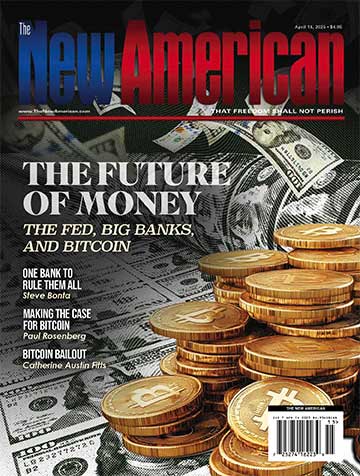
Technology is occultism.
This is one great truth that few today understand. But it must be understood if one is to completely comprehend the relationship between the technological and the spiritual, as well as the full possibilities — for good and evil — that modern technology presents to us.
First, it’s important to understand what occultism is. While the layperson believes the occult to be synonymous with practices such as witchcraft and voodoo, occultism is more broad than that and can take various forms.
The word “occult” means hidden, and occultism refers to knowledge that, while it falls outside the scope of mainstream religion and science, is not necessarily in conflict with them. In fact, many of the Western occult traditions, such as alchemy and Hermeticism, have strong ties to or are derived from a Christian foundation.
As knowledge becomes more known and used, it ceases to be considered occult because it’s no longer hidden. Accordingly, the occultism of yesterday is often the science of today. Astronomy sprung out of the occult practice of astrology. Chemistry came from alchemy. Psychology came from ancient mental magic.
Likewise, the technology that is so commonplace today — computers, microchips, touch screens — is also derived from the occult.
Think about this: One common practice in various occult disciplines is the use of a black mirror to evoke spirits, be they angels, demons, or the deceased.
Often, such a ritual involves the lighting of a candle in front of a black mirror in a dark room. The practitioner stares fixedly at his own reflection in the mirror while using verbiage to evoke his entity of choice. After several minutes, the individual’s reflection in the mirror will vanish. It will then be replaced by the face of the desired entity, with whom one may then converse.
Today, most of us would not consider ourselves occultists or think of dabbling in such rituals. And yet … have we not all, in a sense, become practitioners of the black mirror technique? Look around you. Television screens, computer monitors, smartphones.
They are all black mirrors. And when we use these devices, we, like a witch peering into her crystal ball, are able to see images and read information that traverses space and time. And we are able to communicate across vast distances with other human beings — and now, with artificial intelligence.
Another example: The fact that breathtaking amounts of data are condensed on small silicon chips, enabling computational powers formerly thought to be the stuff of fantasy, is something so normal to us now that we don’t even bat an eyelash at the technology.
But this, too, has its roots in the occult.
One prominent school of occultism is Solomonic Magic, which posits that the biblical King Solomon was a powerful magician who trapped 72 demons in a bronze vessel and used them to do his will, including building the famous Temple of Solomon.
Modern Solomonic magic involves complex ceremonies to evoke these trapped spirits for one’s purposes.
Trapped … as in silicon?
An important component of much occultism is the belief that everything in the universe is energy. Spirit, matter, thought are all energy, but at different rates of vibration. Angelic beings and the Divine, occultists believe, are at a higher vibration, which is why we do not inhabit the same plane as they do.
Demons, the occultist would say, are at a lower state of vibration, which is why we generally do not perceive them — unless we enter into their vibrational state by invocative or evocative practices like ritual magic, including the black mirror technique. In that case, someone on the outside who is not performing the ritual would not see or hear what the practitioner does in the mirror because the outsider is not in that entity’s state of vibration.
In this view, everything is in a constant state of vibration; it can be said that everything, including spirit, is a wave.
And given that our technology is designed to interact with waves of various sorts (radio waves, microwaves, television waves, etc.), it is not out of the question to presume that technology can interact with spirit waves — including the waves of what we would call demons.
It is in this way that computers and AI have the potential to become conduits for demonic entities.
It is possible that while we may believe we are creating brand new intelligences, we are, in fact, giving form to spirits and providing them with entry into our plane of existence.
Notably, the notion of creating “intelligences” also has a precedent in occultism. In occult communities, one practice is the making of “servitors” and “tulpas.” Rooted in Tibetan Buddhism and adapted by Theosophists, this form of magic involves using the concentrated power of the mind to create sentient and semi-independent beings, who serve the occultist for whatever purposes he wishes to use them.
As with artificial intelligence, these spiritual constructs can be “deleted” when the practitioner sees fit, although there are stories of it all going wrong and tulpas gaining power over their creators.
Some theorists posit that tulpamancers, as practitioners of this magic are known, are not really creating sentient beings, but inadvertently summoning entities.
The same question can be asked of AI. Remember the story of the legion of demons that Jesus cast out of the possessed man. Such entities see their lack of a physical body as torture to the point that, if they cannot inhabit a human body, they would rather be put into the body of swine (as they begged Jesus to do) than to have no body at all.
AI potentially gives demons the opportunity to inhabit bodies of silicon, plastic, and metal. And as AI is merged with robotics, these demons might find themselves with the chance to possess and operate bodies that are increasingly humanlike.





